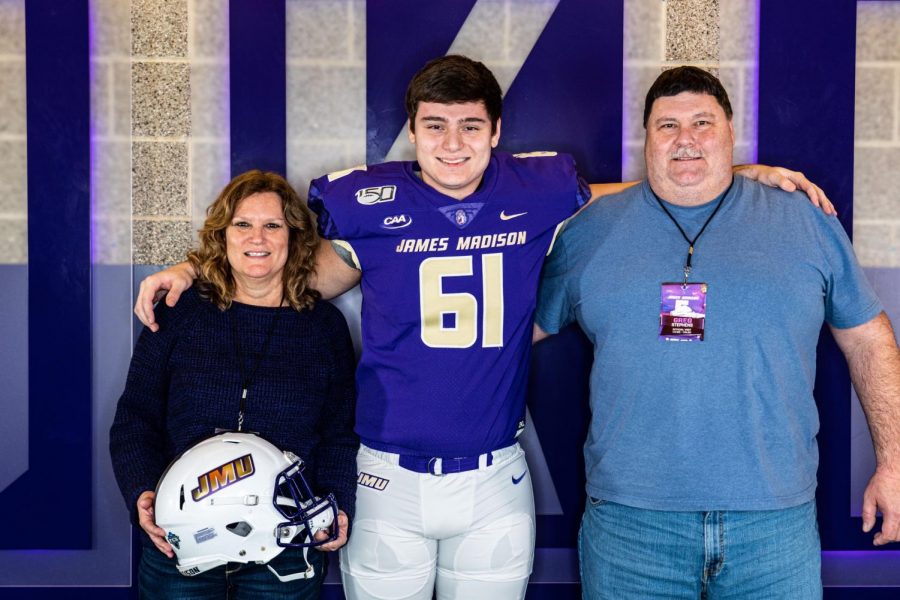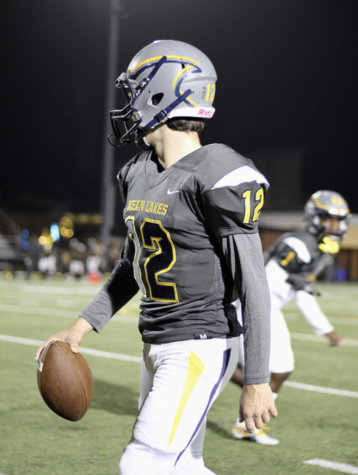College and universities’ controversial comeback
JMU Freshman Tyler Stephens poses with his parents Kathy and Greg Stephens upon his arrival to the university.
September 8, 2020
Of all the places not set up for social distancing, colleges and universities are among the worst. Shared housing, bathrooms, packed dining halls, parties, football games, etc.– all completely contradict the regulations that COVID-19 demands. With the arrival of the fall semester, colleges made decisions on how they plan to move forward, but many disagree and they are unfair.
“I’m excited about college starting, but I wish it was under different circumstances. It is really confusing training to get used to managing five different class schedules, but I’ve gotten the hang of it,” said Tyler Stephens, who attends JMU this fall.
The majority of schools have decided to implement a mixture of instruction procedures instead of committing fully to either online or in person. Many schools decided to use hybrid classes, which include both virtual instruction and in-person teaching, in order to give students a chance to ask questions and learn face-to-face from professors while also keeping student’s safety in mind.
“In hybrid classes, I have one day a week where I go to class in person, and the rest is asynchronous online. Then I have two classes completely online; one has zoom meetings twice a week, and the other is completely asynchronous,” said Stephens.
With many concerns regarding students’ return to campus, large numbers of young people expected to police themselves and self-isolate raises many problems during a global pandemic. Students have been warned of severe punishments for breaking rules and attending large gatherings, but schools cannot enforce the rules in every single situation. They have to depend on their students to respect and follow the guidelines, which unfortunately, has not happened in most cases. The Universities of North Carolina, Notre Dame and now James Madison University had very high numbers of cases in very little time after students’ return. Those schools and more have shut down and gone to online-only courses.
“Numbers have gone up to 15. We have to wear masks and all tables are socially distanced,” said Caitlin Alverio, former alumna, who now attends Longwood University.
As of now, 36 states have reported a total of 8,700 positive cases in colleges and universities, and almost every school that returned has already had to quarantine students who either tested positive or were in contact with someone who did. The large amounts of quarantined students can be viewed in two perspectives. Some think that the cautious procedure will successfully limit the spread, while others believe it shows that schools cannot handle these large amounts of kids during a pandemic.



Abigail Hicks • Sep 11, 2020 at 4:01 pm
Very well written! It was really interesting to see how other colleges are handling COVID-19.